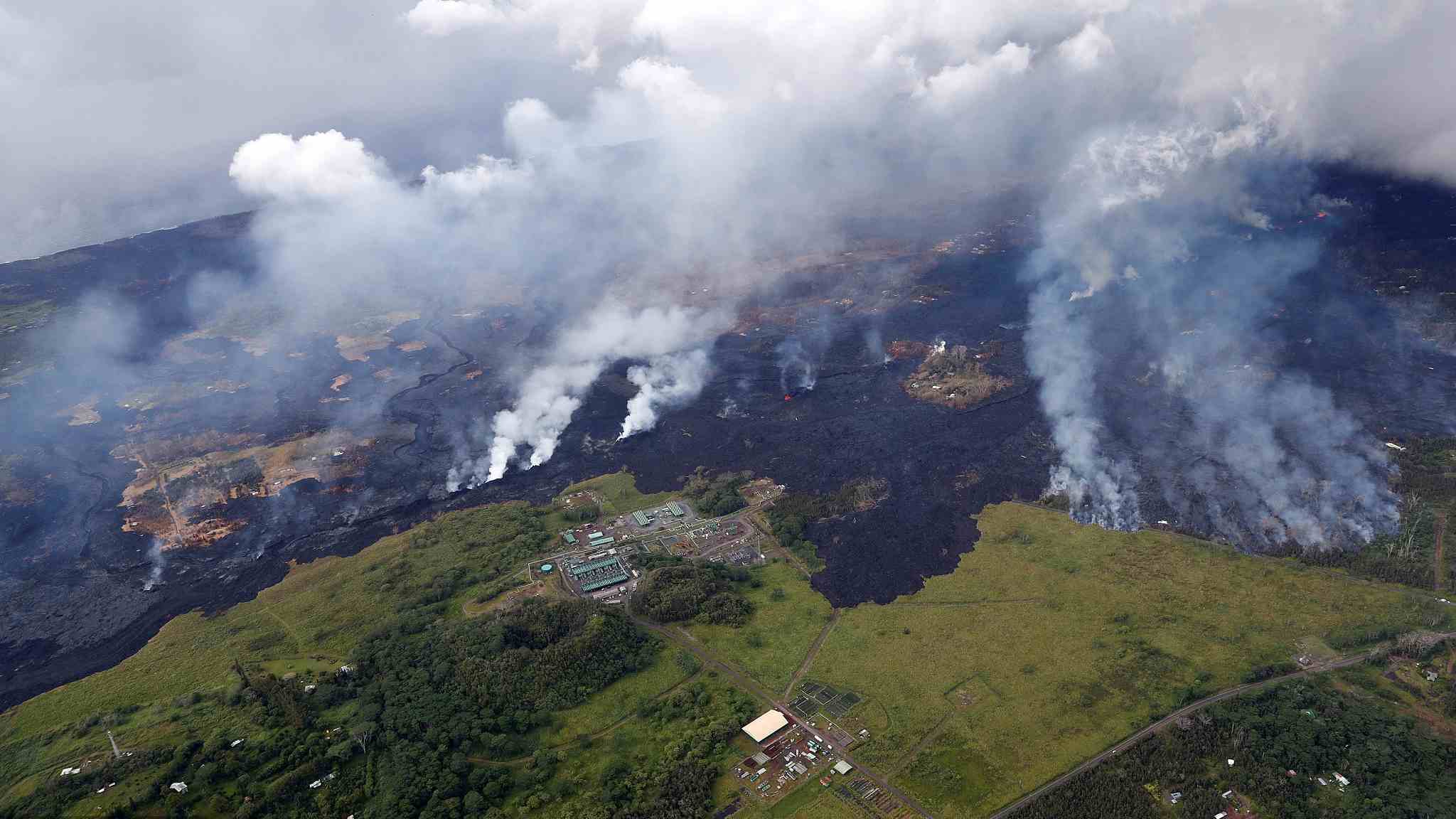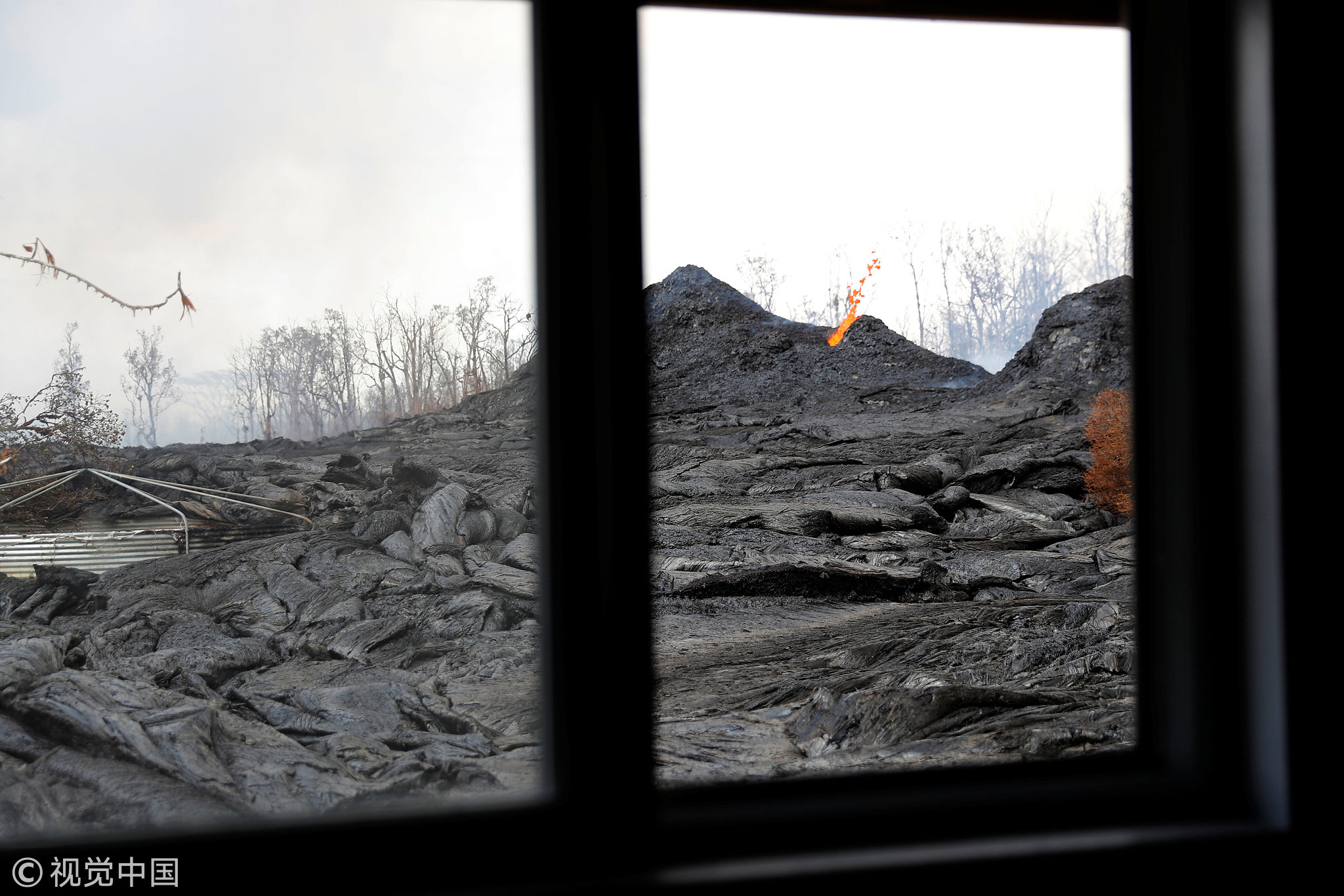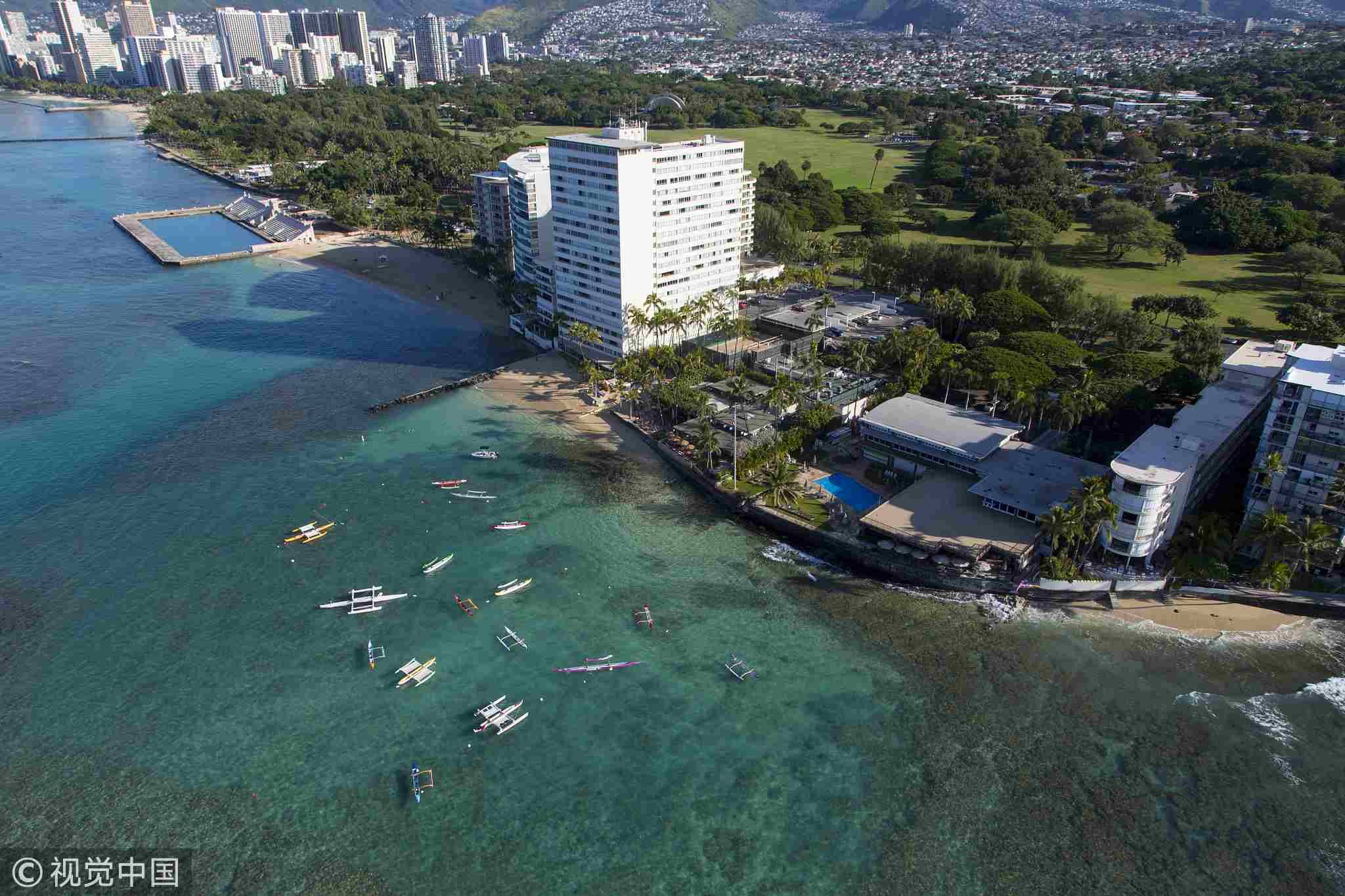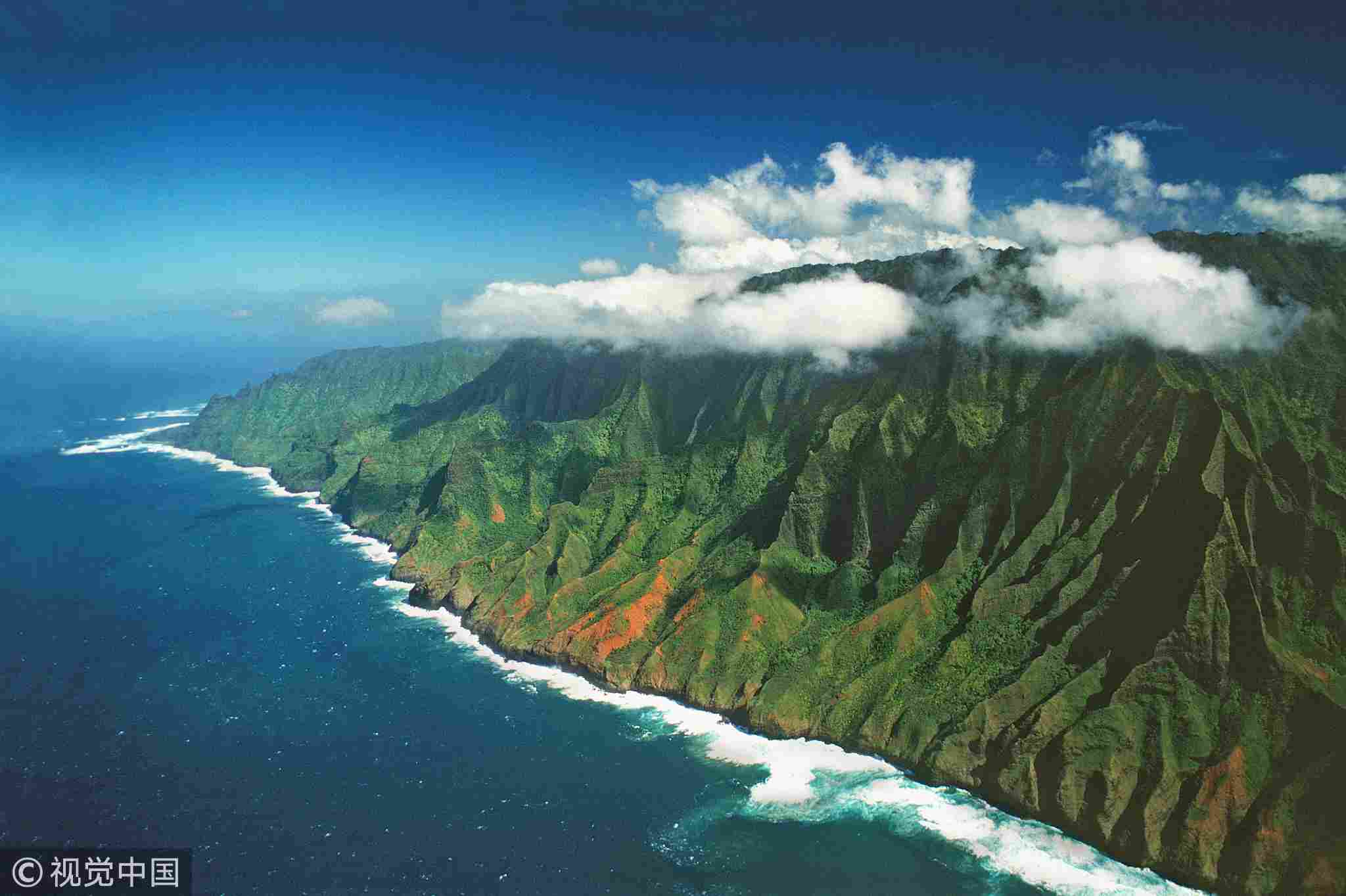
Travel
14:42, 01-Jun-2018
Hawaii has 5 other active volcanoes in addition to Kilauea
CGTN

Hawaii’s Kilauea volcano has captivated people around the world by shooting lava high into the sky and sending rivers of molten rock pouring down hillsides into the ocean over the past month.
But Kilauea is only one of many volcanoes in Hawaii. Here’s a look at some of the others.
Why does Hawaii have so many volcanoes?
The Hawaiian Islands are a chain of volcanoes formed over millions of years. They’ve developed as the Pacific Plate – one of more than a dozen tectonic plates on the earth’s outer layer – slowly moves northwest over a stationary hot spot of magma under the earth’s surface. The hot spot partially melts an area under the Pacific Plate, sending magma to the ocean floor. Over time, lava accumulates and emerges above the ocean and builds islands.

With an active volcanic fissure in the background, the lava flow from the Kilauea eruption is seen from the kitchen window of a home on Nohea Street in the Leilani Estates near Pahoa, Hawaii, US on May 27, 2018. /VCG Photo
With an active volcanic fissure in the background, the lava flow from the Kilauea eruption is seen from the kitchen window of a home on Nohea Street in the Leilani Estates near Pahoa, Hawaii, US on May 27, 2018. /VCG Photo
One volcano is still submerged: The top of Loihi is currently 3,189 feet (975 meters) below sea level. Scientists estimate it will take about 200,000 years for it to pop out over the sea at its current eruption rate.
How many active volcanoes does Hawaii have?
The Hawaiian Volcano Observatory, part of the US Geological Survey, defines an active volcano as one that has erupted within the past 10,000 years.
Hawaii has five such volcanoes in addition to Kilauea, though Kilauea is the only one currently erupting.
Three are on the same island as Kilauea - Mauna Loa, Mauna Kea and Hualalai. One is on Maui - Haleakala. The last is Loihi, which is underwater to Kilauea’s south.
Is there a volcano in Waikiki?
A volcano, commonly known as Diamond Head, grandly presides over Waikiki, the world-famous mecca for tourists in the state capital of Honolulu. It’s one of several volcanic craters on Oahu that scientists believe were formed between 40,000 and 500,000 years ago.
Diamond Head sits on top of a much larger volcano, named Koolau, combined with the second largest volcano, named Waianae forms most of Oahu’s land mass. The Koolau and Waianae volcanoes are about 2 to 3 million years old. No Oahu volcano is active.

Waikiki in Hawaii /VCG Photo
Waikiki in Hawaii /VCG Photo
Which activities take place on the volcanoes?
The highest peaks on each island are considered sacred in Hawaiian culture because they represent the realms of the gods and goddesses. There are shrines at the summits of Mauna Kea, Mauna Loa and Haleakala, including those honoring the heavens, the earth mother and ancestors. Ceremonies are sometimes performed at the summits.
The top of Mauna Kea, which is only slightly taller than Mauna Loa at 13,803 feet (4,207 meters), hosts about a dozen of the world’s most advanced telescopes. The observatories take advantage of the clear weather and limited light pollution to peer deep into the night sky. Mauna Loa and Haleakala also have several telescopes.
Watching the sunrise from the top of Haleakala and Mauna Kea has become a popular activity for tourists.

Kauai coast /VCG Photo
Kauai coast /VCG Photo
Tourists also enjoy visiting the crater at Kilauea’s summit, which is 4,009 feet (1,222 meters) above sea level and inside Hawaii Volcanoes National Park. Tourists also like to watch lava flowing down Kilauea into the ocean. But dangers posed by the current eruption have forced the Park Service to close the summit area, and Hawaii County officials have restricted the ocean entry point.
Hotels, farms, cattle ranches, beaches and towns line the bases of the mountains.
How old is the oldest volcano?
Kauai and Niihau islands are the oldest of the eight main islands in the state of Hawaii. They were each formed about five million years ago. Erosion and landslides have produced dramatic cliffs on many of the older islands, like the Napali Coast on Kauai’s north shore. Molokai has the tallest sea cliffs in the world, according to the Hawaii Tourism Authority. They reach more than 2,000 feet (600 meters) above sea level.
Small atolls and seamounts northwest of the Main Hawaiian Islands are also believed to have been formed by the hot spot. The oldest atoll, Kure, is about 30 million years old.
Source(s): AP

SITEMAP
Copyright © 2018 CGTN. Beijing ICP prepared NO.16065310-3
Copyright © 2018 CGTN. Beijing ICP prepared NO.16065310-3